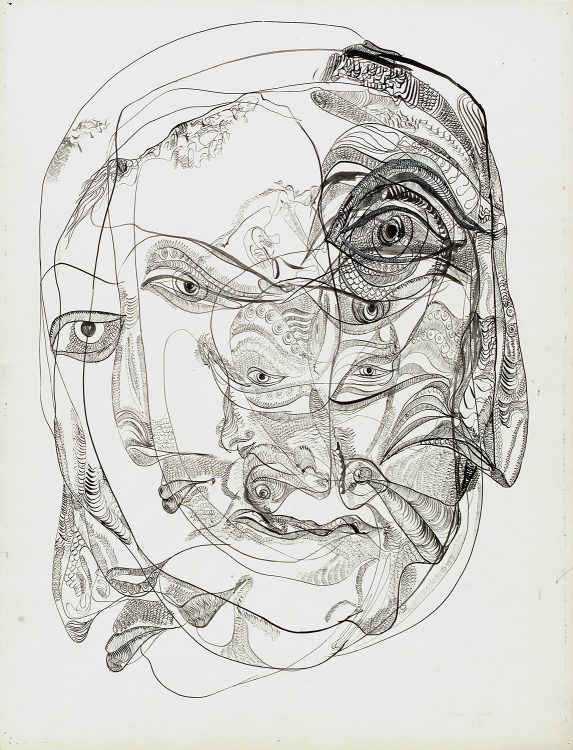Today, in art, architecture and politics, questions of instability and security, containment and dissolution, partition and contagion, and purity and toxicity abound. Borders are manifest between fantasy and reality, interiority and exteriority, between myself and the other. Transgressed borders give rise to feelings of anxiety or overwhelm, compelling acts of compulsion or withdrawal. Borders are drawn within our homes and expand to delimit nations; they are transgressed by acts of invasion or occupation, or maintained by acts of policing; they are permeable or hardened. Temporal borders assign how a past epoch borders the present, or how we can bridge temporal modes within the same space: how modern or highly capitalised forms and traditional or archaic forms mix.
If we orient our view through the optics of combined and uneven development, radical artistic exploration of form in the twentieth-century can be understood as mediating art’s entanglements with and resistance to, gendered and colonial forms of capitalism. If all culture is produced within a dialectics of core and periphery integrated within the machinations of global capital, we will ask how art indexes or expresses this.
In this course we will consider forms of bordering and bordering forms in relation to the spatial, the temporal and the self. We will look to practices of art, socio-spatial and political praxes, from the standpoint of “border thinking”, which “emerges in the process of delinking from the colonial matrix and [potentially] escaping from its control” (Tlostanova and Mignolo).
We will use our own mediation of boundaries to relate to borders more broadly, both in the sense of historically constructed borders that define geo-politics, and abstract, conceptual notions of the limit or frontier. Bordering Forms asks how art renders objective the crises of a bordered world.
